3 ways to interpret landscape photography
Surrealism, heritage and industrialisation are the main motives of the three landscape artists we chose to analyse today.
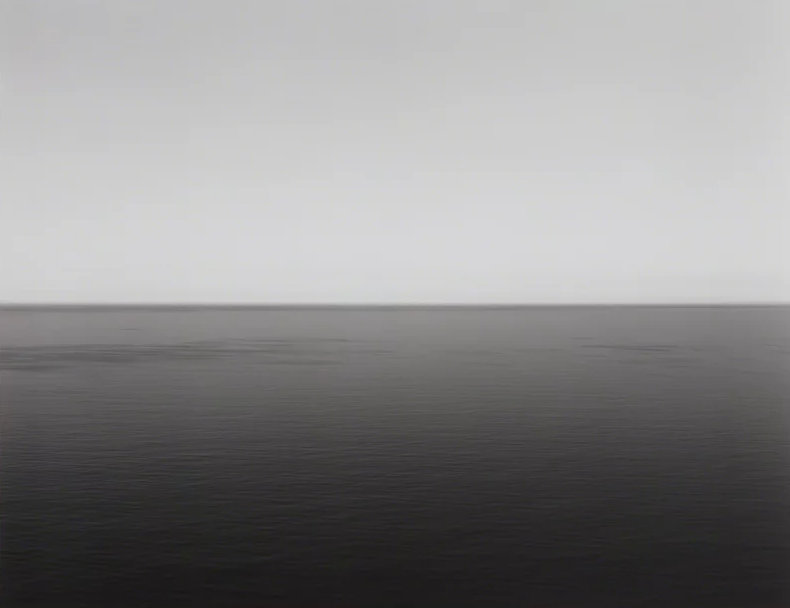
Hiroshi Sugimoto - English Channel, Weston Cliff
We draw inspiration and work on assignments also from our small but expanding book collection on photography. One good source is for example Langford’s Basic Photography book full of projects and tasks to work on so we can train our photographic eye. We selected 3 British photographers and their landscape photography to analyze.
Take a look at the pictures below and try to describe them in your own way, find the commonalities and differences etc.
Bill Brandt
“Non-artist”, Brandt went to Paris to meet his mentor Man Ray in his late twenties . His work had a surreal character — not the intellectually playful irrationalism of his teacher, but a poetic romanticism suggestive of de Chirico and Doré. When he returned to London in the thirties, England had forgotten its rich photographic past, and showed no signs of seeking a photographic present. Isolated from the dullness and vacuity of its surroundings, he strengthened his radical vision. His poetic is reflective, pictorial and formal.
In this sample of his work he detaches from a devoid view of the southern bank of the Thames, but at the same time he seems to emphasise with passers-by of every social class and condition.
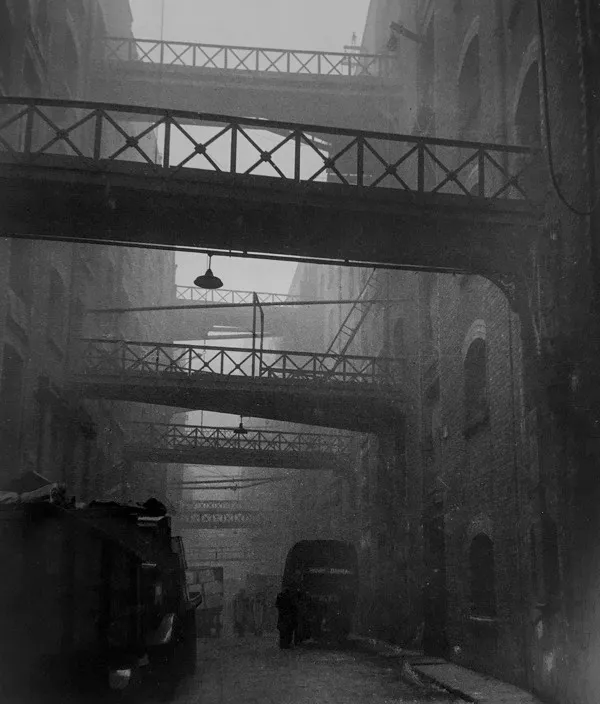
Shad Thames, a street between warehouses in Bermondsey c.1936
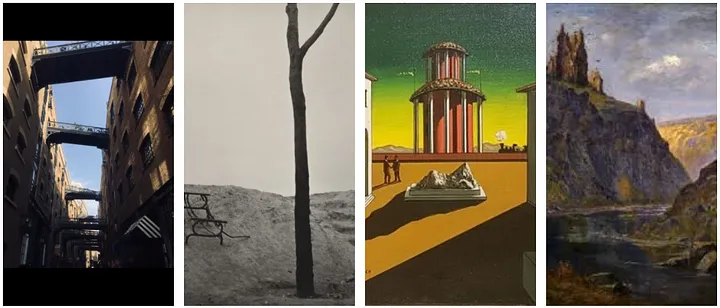
Juli’s take on the same street (2019) / Man Ray “le terrain vague” (1932) / Giorgio de Chirico “Melancholia” (1916-1940) / Gustave Doré “Castle on the Rhône”
“If there is any method in the way I take pictures, I believe it lies in this. See the subject first. Do not try to force it to be a picture of this, that or the other thing. Stand apart from it. Then something will happen. The subject will reveal itself.”
Bill Brandt
Ingrid Pollard
Guyanese born, British raised. She is a contemporary photographer, painter, researcher of printing techniques and media. Pollard, member of the Association of Black Photographers intervenes her photographs using hand-painting, post-colouring processes. But first, she imprints on the landscape her unique subjectivity of history.
The landscape is seen by her as a blanket, laid out to represent the race, the sense of belonging or otherwise dread from her rural white inhabited English countryside.
Her work is reminiscent of romantic poet William Wordsworth’s lyricism. however it is infused with a stronger materiality, alchemy even, which in her own words is “how the physical world is captured by”.
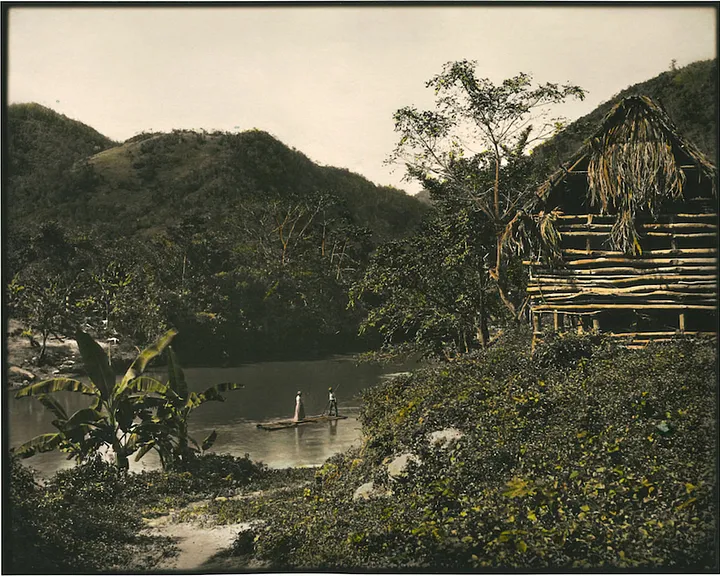
The Valentine Days #3, Ferry on Rio Cobre, J.V. 13923, 1891/2017
”… Searching for sea shells, waves lap my Wellington boots, carrying lost souls of brothers & sisters released over the ship side…”
Ingrid Pollard
John Davies
Torn between England and continental Europe, post-war photographer Davies create astonishing projects that explore the divide between urbanisation and natural space, as a continuation of his coal mines and farm upbringing.
He experiments with large prints of traditionally black and white landscapes taken from high points with medium and format cameras. Lately over the years he implemented DSLR together with darkroom photography.
His main influence is Andreas Gursky’s majestic and disorienting panoramas.
Davies involvement into city reformation and preservation of natural spaces blurs the line between a topographic image and an intentional aim to act on the infrastructure and development of the city.
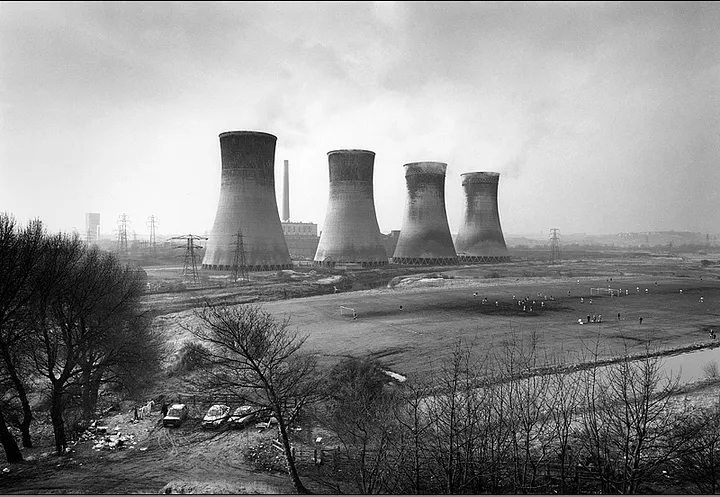
Agecroft Power Station, Salford 1983
“A fundamental aspect of my approach to landscape is the sense of power it can symbolise and evoke. Images of land, water and sky can become metaphors, which reflect our emotional and spiritual states. But the landscape can also represent power in terms of land ownership and material wealth. It is this dual and often ambiguous representation of the metaphysical and the material in the landscape that underlies my photographic work. I believe in the beauty of truth rather than the truth of beauty even though the meaning of visual truth can be challenging and often fluid. My work attempts to raise questions about our collective responsibility in shaping the environments in which we live”
John Davies
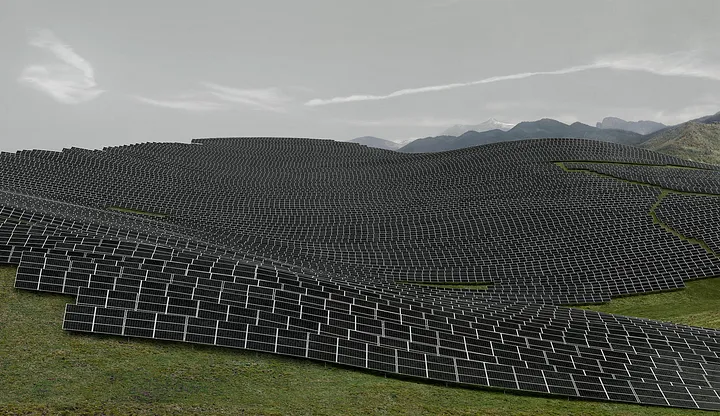
Andreas Gursky “The old world is in the background, the modern one upfront…Les Mées”